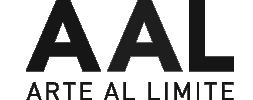In its thirteenth edition, the ARCO-BEEP Prize was awarded to Spanish artist Eugenio Ampudia. The development of his highly ironic and provocative work following the most keen observations, is transferred on this occasion to the way in which art as language can be prey of the paradox in Try not to think so much. The noise, understood as the dissonance that alters the communication channel, can be handled at will by the spectator through a series of synthesizers that alter the message, a fact that is part of our everyday life as information receivers. Eugenio Ampudia already has two other works in the BEEP Collection, “Mala hierba” (low life) and “Perec bajando una escalera” ( Perec walking down a stair).
The sinuous but constant journey that ARCO has maintained with the new media art began in 1999, when a section was created dedicated entirely to this wide and complex artistic discipline. Moving through the various and numerous nomenclatures, categories and disciplines of electronic art is an arduous task. The interdisciplinary, transdisciplinary and multidisciplinary produces hybridizations in relation to the latest technologies, sciences and arts where everything becomes a raw material to be hacked. Understanding the meaning of hacking in its original meaning: modify, expand the use of an object or medium.
- You might be interested:
Must see Exhibitions | Madrid full of visual art!
Semíramis González and Daniel Silvo | The new of JustMAD
At the beginning the section was dependent on Sanitas. Vicente Matallana, current director of the BEEP Collection, had a meeting with Rosina Baeza and began a collaboration. Over time, ARCO considered that if after 15 years the technological art had not settled in the market, it had to be integrated in a natural way thus culminating it, and in substitution, the creation of the ARCO BEEP electronic art prize in 2006. This solution was the result of an experiment in a market sector.
The company BEEP is dedicated to information technology and electronics and is part of the Ticnova Group. Potential candidates must meet mainly one requirement, to exhibit a work related to the electronic art categories in one of the fair’s stands. An award with an economic endowment that has been the basis and the beginning of a private collection of particular characteristics in Europe, which treasures electronic, interactive, sound, robotic, bio-artistic art, produced from the 70’s to 2016.
The staff of artists is of a very high quality, the borders for their inclusion are not found in the geographical frames or boundaries but in their ability to shake over from the use of technology the everyday, to reach the community from the traction that the work can have in whoever observes it. Art as a tool to hack society, to have a direct impact.
The dating of the works does not correspond so much to a historicist nature as to a non-linear configuration of the milestones of electronic art as a repository of art in continuous evolution and to understand its evolution. A wealth that transcends the borders, spatial and temporal, a legacy for posterity. From the first canonical figures, Analivia Cordeiro, Orts, Eduard Kac, to the new generations, who had access many more means, Ubermorgen, etoy, Christa Sommerer & Laurent Mignonneau, Anaisa Franco. Since 2003, the collection has reached a total of more than 40 works, among which are the most important in Europe in its specialty, becoming the first collection of the state specialized in art linked to science and technology.
The TICNOVA Group’s company specializes in informatics and electronics, which is why it focuses its attention on artistic creations linked to these fields and others that do not fall under its direct responsibility but which do have a relationship with technologies and sciences, such as robotics or Bio-art. A company that understood the interest that could suppose to treasure the creativity of the artists in a pure state approaching to the fields of the most contemporary knowledge. Sponsors of this electronic art project, which promotes artistic creation linked to science and technology, contribute to the dissemination of its interactive character and its pedagogical values in the information society. As stated by Mark Tribe, founder of Rhizome, artists have always been curious users who have forced physical uses, pushing devices to the limits of continuous and creative movement.
In the words of its director, Vicente Matallana, this sector of electronic art has generated a new economy of art and for artists, based not on the sale in the market but on the fees received for the staging of exhibitions, for the production of work and research. This model has been reproduced and followed by contemporary art in general.
The collection began in 2015 to become involved in the production of projects and acquisitions so that the artistic community has a refuge thanks to the New Art Foundation.
The company BEEP has been one of the main promoters of the Foundation, which includes the schools of computer, industrial and telecommunications engineers in Catalonia, the Universitat Oberta de Catalunya, UOC, the University of Barcelona, industry through BEEP and negotiations for the incorporation of the Pompeu Fabra University and EURECAT, the network of technological art centres in Cataluña. In this way, it has made possible the intervention of projects promoting research, exhibition and production, whose epicenter is the community and the creation of knowledge from art, philosophy and science.
Currently, for the first time, there is a unique opportunity to visit the collection at the Museu de Reus, curated by
Roberta Bosco and Stefano Caldana under the title Aproximaciones creativas a la Colección BEEP de Arte Electrónico, which will remain open until March 29th.
The alliances between business, art, technology and science are old and have always favored, due to their cognitive character and the use of different transversal practices, the approximation and development of new languages, forms, ideas. From other possible worlds.

